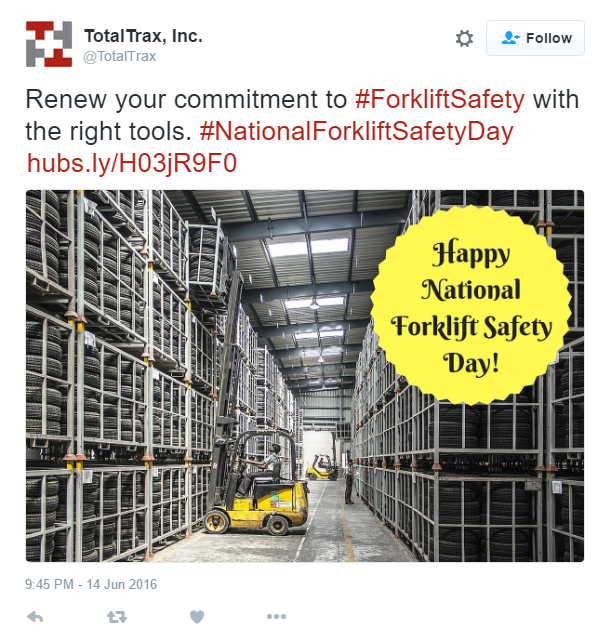
by Fronetics | Jul 18, 2016 | Blog, Strategy

Sellers must engage in speedy, personalized, knowledgeable conversation with potential customers to convert leads into sales.
Leads are only valuable if they convert into customers. So, generating quality leads is only half the battle. You need a sales team that knows how to resuscitate a lead, nurture it, and, ultimately, turn it into a customer.
Demand Gen’s 2016 B2B Buyer’s Survey Report confirms that today’s business buyers are expecting more from vendors than knowledge of their own product. Buyers expect the seller to personalize the buying process. The top four reasons the respondents reported choosing a particular vendor include:
- Timeliness of a vendor’s response to inquiries (98%)
- Strong knowledge of the solution area and business landscape (97%)
- Strong knowledge of the buyer’s company and its needs (94%)
- Content that showed ROI or built a business case for the purchase (90%)
Sales reps must provide a very hands-on, customized buying experience to convert leads into customers. (Hence the “nurturing” part of the phrase lead nurturing.) Here are a few tips to support your lead nurturing process.
Offer quality follow up.
Do you see leads as opportunities? You should. In fact, you should see them as an opportunity to be seized. Seize it quickly with effort more substantial than a single phone call resulting in a salesy voicemail. Follow up must be the start of a real conversation with the lead, building their trust and providing an opportunity for their needs to be heard and acknowledged.
Listen first, then offer solutions.
Avoid pitching as a start to a conversation with a lead. Instead, listen to their pain points and concerns. Identify what their challenges are, and then present specific solutions. Show them explicitly how your products or services could answer each particular need. Let them know they have been heard by recounting specific details from your conversation.
Time matters.
The faster you contact the lead, the better your chances of conversion. A study by Franklin Covey found that contact ratios improve 900% if web leads are called back quickly. Another found that 50% of sales went to the vendor that responded first. And remember that 98% of respondents to the Demand Gen survey reported choosing a vendor because of timely responses to inquiries. Don’t underestimate the value of a quick response time.
Choose the best time to follow up.
Data from 100,000 calls over 3 years analyzed by InsideSales.com indicates that Wednesdays and Thursdays are the best days of the week to qualify leads. Calls made between 4:00 and 5:00 p.m. were most successful, followed by 8:00 a.m. to 9:00 a.m. Of course, you should get to know your potential customers and their individual schedules.
Be knowledgeable about the product.
Nothing kills a lead faster than a salesperson who does not know what their business has to offer. That call is about selling your value to a customer, not just a product or service.
Cultivating a lead is the first step in generating greater sales revenue. It is vital that you don’t let leads die, but nurture them quickly with personalized conversation, identifying their challenges and providing viable solutions.
Related posts:

by Fronetics | Jul 14, 2016 | Blog, Strategy, Talent

When you work for the family business, being mindful about your professional persona can help preserve your familial relationships.
Family businesses can be a source of pride and fulfillment. But, often, they are rife with unprecedented turmoil. Working for a family business presents unique challenges that require special tactics to keep things professional (and to keep the peace).
For example, a performance review from your mom, dad, or sibling can be emotion-driven rather than fact-based. According to Harvard Business Review, fall outs with family over work can cause a tremendous amount of anger, sadness, and shame. So what is a family to do?
Here are five essential tips to working well with relatives:
1) Start your career elsewhere.
Or at least spend a few years with another company. If have only worked for your family’s organization, you lack a well-rounded perspective about the business. You are missing out on valuable training, alternate strategies and viewpoints, and unique experiences that would make you an asset to the family business. And that’s no slight to your company: Having several relatable job experiences creates better judgement skills. Also important, working in the “outside world” helps sow seeds of confidence, which are difficult to cultivate when working with a parent.
2) Set boundaries between family talk and work talk.
Separating work from home is key to having a healthy professional relationship and still being able to speak to your family at that weekend BBQ. Family members must learn to talk to one another as business partners. Establish rules for professional business interactions, like using a professional tone when speaking. Actively listen to hear the other, not to form your response. Don’t interrupt others who are speaking. Ask for clarification if you don’t understand the other person’s point of view. Let everyone participate equally.
3) Define your role and what you bring to the company.
Limit competitiveness and bad feelings by outlining clear job descriptions. Stay within the boundaries of your role to avoid stepping on others’ toes. Then bring all you have to that role. Picking up the slack for a fellow employee is annoying, but having to do it for a family member can cause anger and resentment.
4) Get an outside perspective regarding challenges and strategy.
Hire an outside strategic advisor to evaluate your business, how it fundamentally is working (or not working), and how the roles of the family members are either supporting success or creating greater challenges.
5) Set high expectations and stick to them.
No favoritism is allowed. Your parent or sibling should want you to succeed, but not through coddling. Expectations should remain high for all family members, as for every employee. Those that fall short should be subject to the same consequences as non-family.
Related posts:

by Fronetics | Jul 13, 2016 | Blog, Content Marketing, Marketing

Using search marketing as part of your content strategy can increase web traffic and, thus, visibility for your business.
Search marketing, formerly “search engine marketing,” uses both paid (SEM) and unpaid strategies (SEO) to increase traffic to your business’ website. These two efforts work together to improve the likelihood that potential customers searching the internet will find your content.
Let me explain. When an individual searches for something on a search engine like Bing, Google, or Yahoo, the query brings him/her to a Search Engine Results Page, or “SERP.” Since we read from top to bottom, the person first sees the results that fall at the top of the SERP. Studies overwhelmingly show that the further down on the page that a link falls, the less likely someone will click it. What’s more, people rarely click on results beyond the first page. Thus, it is critical to rank as highly as possible on SERPs to entice potential customers to click through to your site.
So, how do you rise to the top? This is where search marketing fits into your content strategy.
SEO (Unpaid)
SEO (search engine optimization) is optimizing your content to improve how it ranks in search engine listings. This requires gaining a basic understanding of how and why search engines classify webpages and then catering to those factors where possible.
The search engine’s goal is to bring the most relevant results to someone who enters a search query. They use complex algorithms to determine how relevant a website is based on the query. So, if you type “best restaurant in Boston,” the search engine will scan the entirety of the internet to bring you a list of websites, in order, that are most likely give you an idea of the best Boston restaurants.
Each engine’s algorithm is slightly different, highly sensitive, and a closely held secret to keep websites from maliciously optimizing their content. Google, for instance, uses about 200 factors in its search algorithm, some of which are public knowledge, and most of which are not. This makes SEO somewhat of an art.
The best bet for optimizing your content is to consider those known factors while remaining true to your content. You want the people who are looking for you to find you. Here are some tips.
1) Use keywords throughout your content.
Algorithms crawl the internet to scan text of all kinds (websites, PDFs, documents, etc.) to find content that matches search queries. Identify several keywords that someone who is looking for products or services like yours might use in a search query, and use them throughout your content. It is likely even more effective when you use keywords in URL titles, headings and subheads, and paragraphs near the beginning of the page.
2) Use keywords in meta tags.
Webpages contain data, called meta tags, that search engines read to understand the main idea of the page. These are invisible to the average reader (unless you know where to look). Most important for SEO are the title tag and the meta description.
3) Distribute content through social media.
Social media is increasingly important to search algorithms because these platforms help determine what content people are using and engaging with organically. Post on your social media channels with links back to your website to improve your social media referral traffic metric and, thus, your SEO.
4) Encourage inbound links.
To understand how trustworthy and authoritative a particular website is on a certain subject, algorithms consider inbound links, or other sites linking to the website. HubSpot has some excellent advice on how to grow inbound links.
5) Make your site mobile-friendly.
As web traffic increasingly derives from mobile devices, search engines are rewarding websites that are mobile-friendly. If your website is not responsive or, at least, optimized for mobile, your search ranking will suffer.
6) Create frequent, quality content.
When you regularly publish content that is valuable to your target audience, search engines will “learn” that you are a trustworthy publisher with up-to-date information. Also, the more your content resonates with your target audience, the more they will post and share it, which means more referral traffic and inbound links, which likewise increase SEO.
SEM (Paid)
Search marketing through paid methods like pay-per-click (PPC) or paid advertising helps get your content in front of your target audience, regardless of how it would rank organically. Google AdWords is the most popular paid search platform used by marketers, followed by Bing Ads.
Google AdWords will show your advertisement to people who search with predetermined keywords. You pay per click, meaning you pay a fee for every person who clicks on your advertisement, regardless of how many people Google shows your ad to.
You can imagine that a number of advertisers vie for the same keywords. Google actually auctions off ad space with each search, ranking ads by bid (how much you are willing to pay per click) and quality score (does your content answer the searcher’s need?). To increase the success of your PPC you should:
- Identify relevant keywords that potential customers might use when searching for your products or services.
- Conduct comprehensive research of keywords with tools like Keyword Planner.
- Speak your audience’s language with dynamic keyword insertion.
- Determine which words you wish to bid on, and create groupings of these words to pair with ads.
- Identify and eliminate irrelevant words unlikely to appear in keyword searches.
Remember, search engines cater to the searcher. So, the more relevant your content is to someone who is searching for you, the more likely they will find you and want to do business with you.
Related posts:

by Fronetics | Jul 12, 2016 | Blog, Marketing, Strategy

Editor’s note: Sarah Collins is a summer intern at Fronetics Strategic Advisors. She is a rising sophomore at James Madison University, College of Business studying Marketing. You can find her on LinkedIn.
Aligning Sales and Marketing helps companies achieve 20% higher annual growth rates and improves deal closings by 67%.
“What do you think you’ll do with that?” is the question that, more often than not, succeeds me stating that I’m a marketing major. Uh, market? I guess? I’m the kind of student that usually has it all figured out. There’s always a game plan, so to speak, but this time around I had some figuring out to do.
That’s where Fronetics came into play for me. I went into my first intern experience looking at it as a giant learning opportunity. As I began, one of the first things that surprised me was that there were sales people in a marketing office. Little did I know, this is the ideal situation in the industry. Finally, the advice that a mentor gave me — “Take sales classes. You’ll thank me later.” — made sense. Marketing and Sales are like the Batman and Robin of the business world: Results are best when they’re working together.
What’s the reasoning behind aligning Sales and Marketing?
Through my research, I’ve learned that aligning Sales and Marketing goes back to a basic business concept, the buyer process: awareness, consideration, decision. The ultimate goal in business is essentially the same across the board. Sell and provide your product or service to your target audience. In order to achieve this, it’s best to focus on what the buyers’ immediate needs are at each individual stage of the buying process, and Marketing and Sales excel at different stages of this process.
It relates back to my economics class. Countries will always specialize in what they have the comparative advantage in because, when those two countries trade, they both end up with more than what they would have produced on their own. So Marketing and Sales specialize in their own stages of the buying process, and, in the end, they’re both better off.
HubSpot gives a great example. It wouldn’t make any sense for Sales to try to sell the product to a lead that has entered the awareness stage. At that point, the lead is only looking for specific information. It’s a strength to know where the customer is at and who is best fit to assist.
Why should you believe me?
According to ZoomInfo, only 8% of companies have strong alignment between their sales and marketing departments. Those that are aligned correctly statistically achieve a 20% higher annual growth rate and are 67% better at closing deals. As Articulate Marketing puts it, people are too informed in this day and age to tolerate even the slightest gap in what different departments tell them. The sales process has changed because the internet has given people access to so much information, and companies need to adapt accordingly.
Marketing and Sales are still two different entities.
While the two departments desperately need to be aligned well, there is no denying that they are, in fact, different. Sales generally has short term, tangible goals — such as new-client generation — while marketers are looking farther ahead at goals that aren’t quite as easy to measure.
The movie The Wolf of Wall Street offers a fantastic demonstration of how Sales works. Jordan Belfort (Leonardo Dicaprio) asks his friend Brad to sell him a pen. Brad simply says, “Write this down.” Mr. Belfort now has an immediate need for the pen. Salespeople have the ability to create this need for the buyer.
In an article by the Tronvig Group titled The Difference Between Sales and Marketing, James Heaton states that, in contrast to Sales, “Marketing should put forth an offer that meets the buyer’s needs right at the place and time of the sales opportunity. The most effective marketing is therefore about communication, not manipulation.” It’s when these differences between Sales and Marketing finally begin to work together that all the bases are covered, and the magic begins to happen.
How should companies align Sales and Marketing?
There are two main ways: strategically and physically.
Strategic Alignment
You can ask Sales and Marketing to collaborate in defining a lead generation strategy. This way the two departments aren’t getting frustrated with each other. Marketo highlighted three ways to do so.
- Lead Scoring can be incredibly helpful in understanding which leads are most interested and how good of a fit their company is for your business. These scores are only helpful if Sales and Marketing have worked together to create mutual understanding of the system.
- Lead Generation Metrics need to be understood by both. It won’t work if marketing doesn’t understand what is qualified as a SAL (Sales Accepted Lead) and SQL (Sales Qualified Lead), or if Sales doesn’t understand what makes up an MQL (Marketing Qualified Lead). A mutual understanding will increase efficiency because each department knows exactly what the other is looking for.
- Service Level Agreements can ease the process by outlining each phase of the cycle. For example, when an MQL is handed off to the Sales team, how long does the Sales team have to get in contact? What if they don’t at all? If the system becomes automated enough, you can expect a higher level of performance because the system will provide documentation on how someone became an MQL, and sales will have a record off their contact.
Physical Alignment, aka the Office
The physical layout of the office is also crucial. A study done in 2015 by CEB found that when employees are satisfied with their physical work space, they are 16% more productive and 18% more likely not to quit. Harvard Business Review found the open-concept office, having Sales and Marketing in the same space, resulted in more successful communications. One pharmaceutical company even found that the sales jump was more than 20%, $200 million in revenue.
The statistics are all there showing how detrimental or incredibly helpful aligning Sales and Marketing teams can be.
So have I exactly figured out the answer to my question? Not completely, but there’s still time. What I have learned is that the only choice to make regarding Marketing and Sales is that there is no room for competition between them, and I should definitely be mixing a sales class into a semester or two. Learning early that Sales and Marketing are both essential to each other and gaining experience in both skillsets could be just the competitive edge I need for my future. Lucky for me, there’s three more years of learning to be had.
Related posts:

by Fronetics | Jul 11, 2016 | Blog, Content Marketing, Logistics, Marketing, Social Media, Supply Chain

This is part two of a three-part series on Twitter for B2B. See part one, Twitter for B2B, and part three, How to Use Twitter Analytics.
If you’re not sure what else to tweet, try these 20 ideas.
Twitter is an excellent platform for sharing news and reaching your customers, but it sure can be a lot of work. Our recent social experiment showed us that engagement is highest for Fronetics when we tweet around 40 times a day. That takes a lot of time and energy — not to mention, a lot of content.
You, too, may find yourself frequently strapped for quality tweeting material. We’ve got some ideas to not only fill your feed but to keep your followers interested and engaged.
A few things to remember
Keep in mind the 4-1-1 rule, an idea popularized by Content Marketing Institute founder Joe Pulizzi and Tippingpoint Labs: “For every one self-serving tweet, you should re-tweet one relevant tweet and, most importantly, share four pieces of relevant content written by others.” This prevents your Twitter account from seeming too self-promoting, which quickly will turn off followers, and it reinforces your business’ position as a helpful source of information and knowledge.
Remember, also, that you don’t have to tweet just text. You can also share photos, videos, Slideshares, and links. Mix it up to keep things interesting.
With that said, here are 20 ideas to get you tweeting.
Tweet this
1) Release news.
Twitter has become the new newswire, where stories break and people turn for to-the-minute information. It’s a great place to offer updates about product releases, changes in service, or other company announcements. But also you can share news that might affect your followers or your supply chain: severe weather, acts of terror, or economic or political events.
2) Share company or industry data.
We’ve written before about the potential for data-as-content. Tweeting stats, data, and other numbers relevant to your audience is a great way to get started. You can type out the information in less than 140 characters or create a quick infographic or image.
3) Mine Reddit.
Reddit is an endless source for content of any kind. Create a multireddit with industry-specific subreddits so you can quickly browse what’s trending to share with your audience.
4) Recycle an old blog post.
Be it a week or a few years later, there’s no shame in reposting content after some time has gone by. Maybe it’s relevant to current events. Maybe it got overshadowed by another breaking story or event when it was originally posted. Maybe it did really well the first time, and it’s still relevant. Regardless, tweeting about an old post can drive new traffic to some of your best content. You can always frame it as “ICYMI” (in case you missed it) or a “Best of” post.
5) Praise your suppliers.
Sharing a positive experience with a business partner is great exposure for the partner and good karma for you. It also shows your audience that your behind-the-scenes operations are running smoothly, which reinforces confidence in your products or services.
6) Share a meme.
An internet meme is a humorous piece of media (most often a photo) shared online from user to user. Show your brand’s personality by posting one that will make your followers smile.

7) Thank inspiring speakers from an industry conference.
Did someone give a particularly interesting presentation? Tag them and thank them. Maybe they’ll follow you or retweet you, giving you lots of exposure.
8) Throw it back.
Post an old photo or an old tweet on a Thursday to participate in Throwback Thursday (#TBT). “Old” doesn’t have to mean decades ago, by the way. People frequently use content from earlier in the year — even earlier in the week.
9) Reveal your favorite follow.
Do you really enjoy news or content from another user? Share that person’s Twitter handle with a quick explanation of the kind of tweets followers can expect. You’re offering valuable information to your audience — and you’ll get excellent exposure for your business if the user has a large following and engages with your tweet by liking or retweeting it.
10) Celebrate holidays.
Wish your followers happy and safe holidays, and show photos of your employees celebrating special events. Remember holidays aren’t limited to major religious or patriotic days of observance. International Women’s Day, Bring Your Child to Work Day, and National Ice Cream Month can inspire content. Days of the Year is a great resource for little-known holidays. Did you know that July 11 is International Town Criers Day?

11) Comment on trending topics.
See what people in your network are talking about. The Trends column on the left of the homepage shows popular topics of conversation tailored to you based on your followers and accounts you follow. If a trending topic involves something you have experience with, offer insight and information to help position your company as a thought leader in the industry.
12) Retweet your executives.
Get exposure for your management team or other content spokespeople in your company by retweeting them.
13) Quote someone famous.
Everyone can relate to inspirational quotes. Tweet your favorites or create graphics to share. Or, follow leaders and thinkers you admire and retweet particularly poignant thoughts.

14) Praise an industry leader.
Tag someone to tell them that you liked their book, article, or post. Congratulate newly appointed executives of competitors and business partners. Recognize someone for a courageous business decision, successful quarter, or outstanding support of a charitable organization.
15) Hold a contest.
Build excitement about a product by asking followers to post photos of creative alternative uses with the hashtag #HowNotToUse. Have them share their best recipes using your wholesale food products. Or ask for submissions to name your newest cargo ship. (Boaty McBoatface?) Whether you give a prize or not, people are competitive by nature and will enjoy participating.
16) Answer an FAQ.
Ask your customer service team for a list of customers’ most frequently asked questions and regularly tweet out answers.
17) Ask a question.
Whether “What do you think of our new product?” or “Do you have plans for the long weekend?” there’s no better way to get a response than to ask a question.
18) Conduct a poll.
If you’re looking for a specific answer, use the poll button to see what your followers are thinking. It can be related to your business or just for fun. Try both and see where you get the most engagement!
19) Share photos of company events.
Days of service, employee milestone celebrations, executive retreats: photos help followers attach faces to your business name. It also gives them a behind-the-scenes look at company culture and builds a positive image of your employer brand.
20) Retweet what your network is sharing.
Share helpful, informative, or entertaining content from the users you follow. You not only offer value to your followers, you also let the user know you like their content and prompt them to do the same for you.
Related posts:


by Fronetics | Jul 7, 2016 | Blog, Strategy, Supply Chain

Locally sourced foods are popular with consumers. But for restaurants, the shorter supply chain is plagued by food safety concerns.
Shorter does not mean simpler when it comes the food supply chain. In fact, working with small local producers often introduces a whole new set of challenges, particularly in regards to food safety and preparation.
Take, for example, the chain restaurant Chipotle, which boasted a menu supported by locally sourced foods. Last year, the chain was linked to outbreaks of E. coli, norovirus, and salmonella. Today, shorter food supply chains are under new scrutiny because of safety concerns.
Professor John Quelch of Harvard Business School and T.H. Chan School of Public Health recently authored a case study on food supply chain challenges. He summarizes his findings in an interview with the Harvard Business Review, discussing the major obstacles to local sourcing, how to manage them, and the changing appearance of food supply chains as we move forward.
Here are some highlights:
When there are fewer intermediaries between supplier and restaurant, the supply chain is actually more complex and fragmented, and safety is harder to control.
Essentially restaurants must trust numerous individual suppliers rather than having a standard quality control procedure for a manageable number of specific food sources. McDonald’s, for instance, gets chicken for all its locations from a handful of controlled sources. A nationwide chain that is sourcing locally, on the other hand, will have as many suppliers as there are locations, in theory. This means they may not be able to monitor every one on site.
Sources that mass produce have sophistication and experience in food testing that small local growers lack.
When you source food locally, inspections are on an honor system with that producer. But, the producers may lack the knowledge to assure the highest level of safety. They may not have experience with USDA inspection procedures, and their internal inspection systems may not be as well developed as a company with global operations.
Establishments that want to source locally need to factor in costs of their own safety protocols.
Yes, they may need to charge more from the consumer to balance this, but the safety checks are a must. It does not need to be done in-house either. According to Quelch, a number of very competent, existing independent food testing companies can assure safety and quality. Remember also that consumers are often willing, and expect, to pay more for locally sourced foods, particularly if they are organic and fresh.
Supply chain transparency is a must.
Many larger supply chain companies already have tracking systems in place, but such transparency is lacking at the local level. If an incident of illness occurs from a food supply, the establishment needs to be able to determine what caused it and where it was sourced from. They should be able to hone in on the source as fast as possible, so the rest of their supply chain is left out of the equation and operations are not shut down.
The future will blend global and local suppliers.
A minority of consumers will still have a passion and demand for locally produced, farm-to-table food. But, many consumers will remain price-sensitive, looking for safe food at a reasonable price. So, consolidation will probably occur through partnerships and mergers of global and local suppliers. Large food processing companies may start using local sources to make branded products, which are sourced closer to the target consumer.
Related posts:










